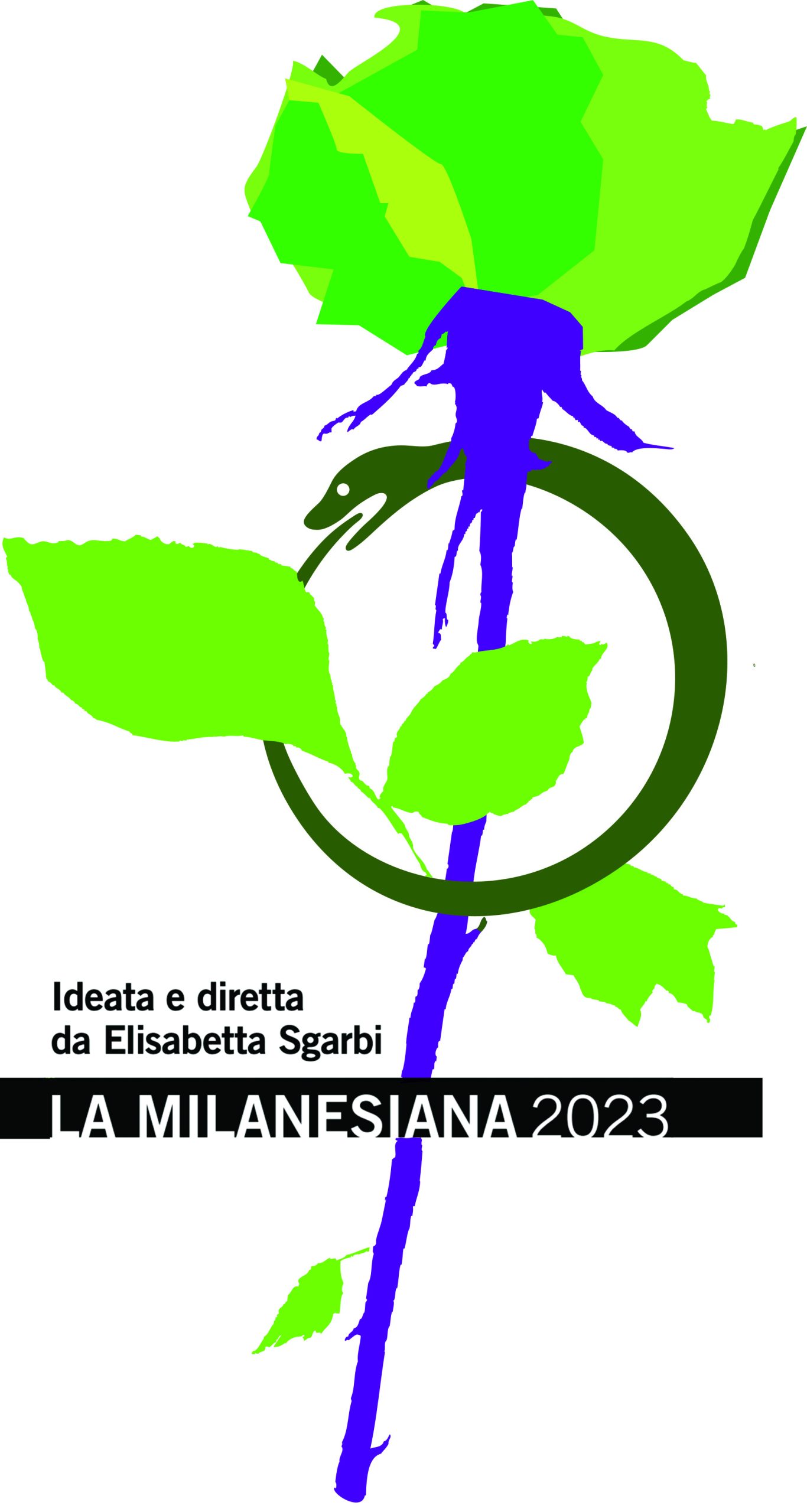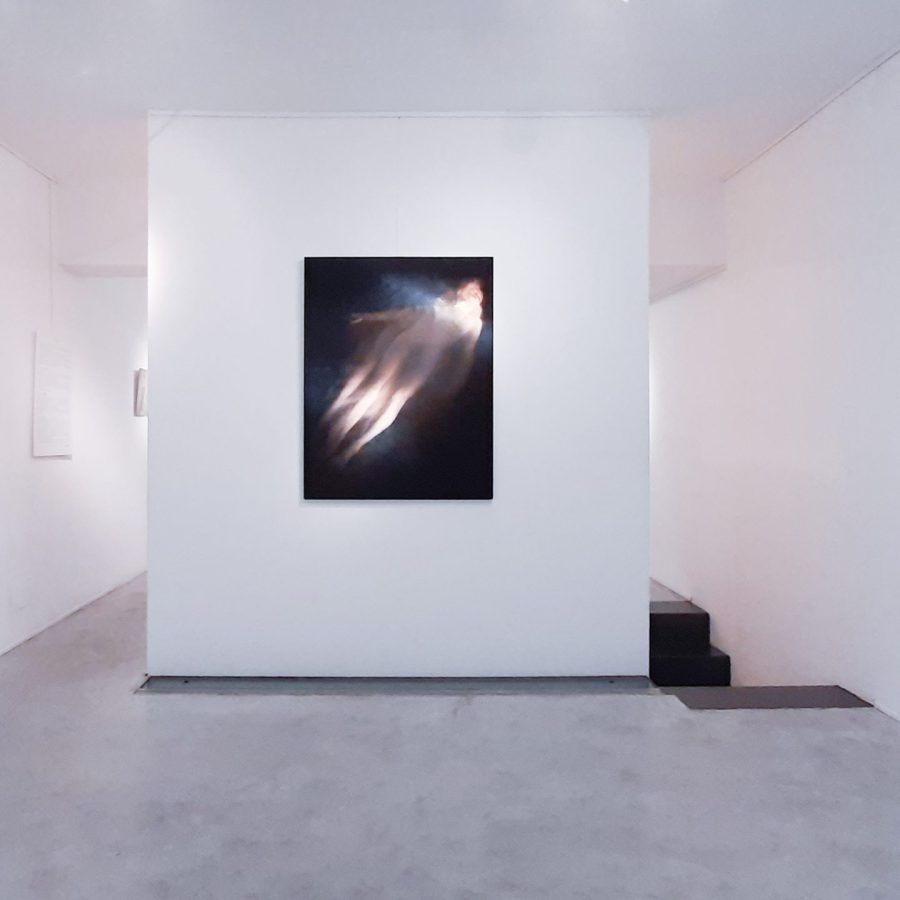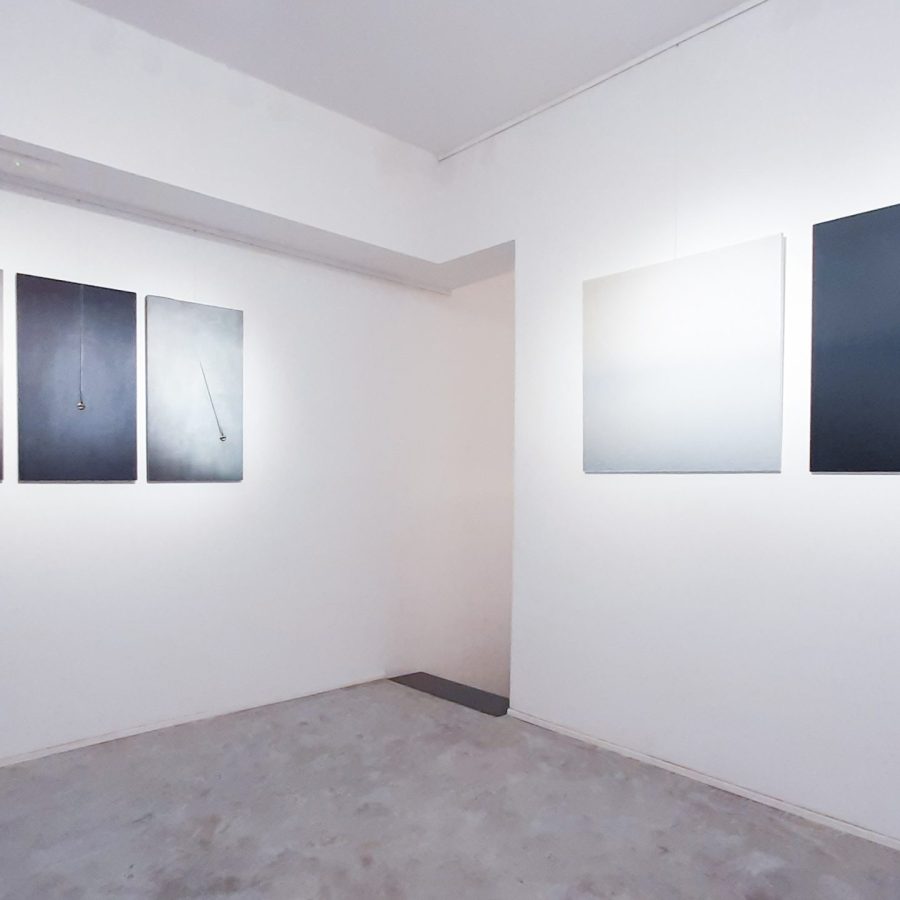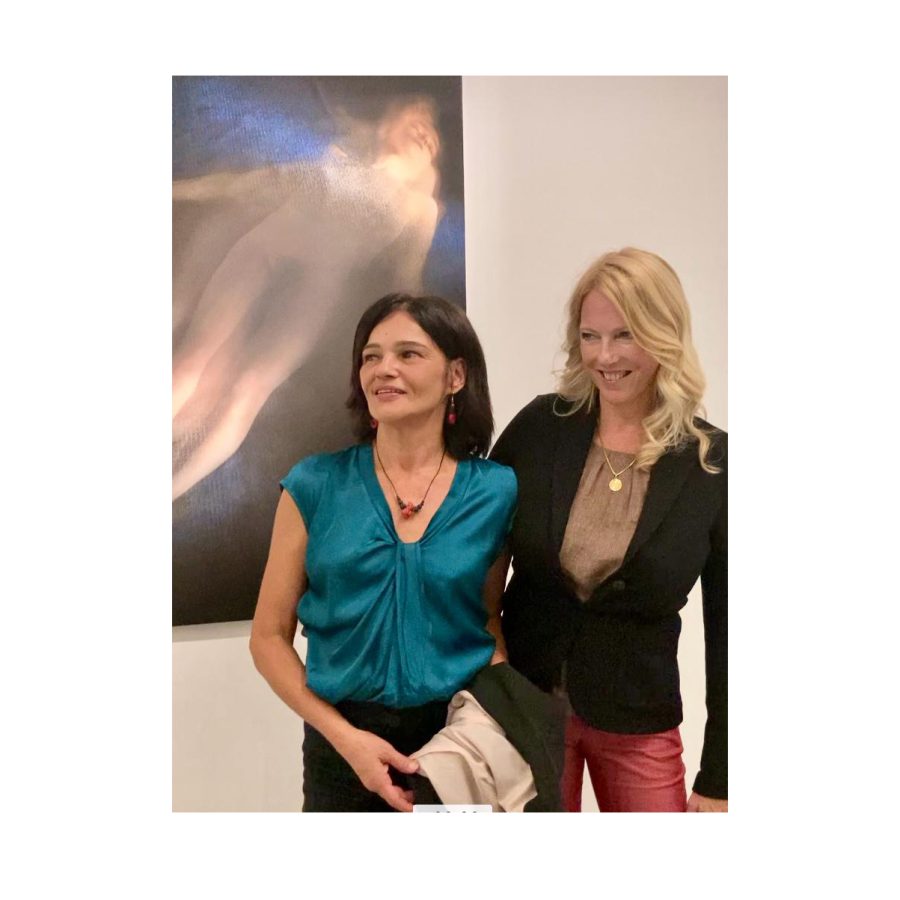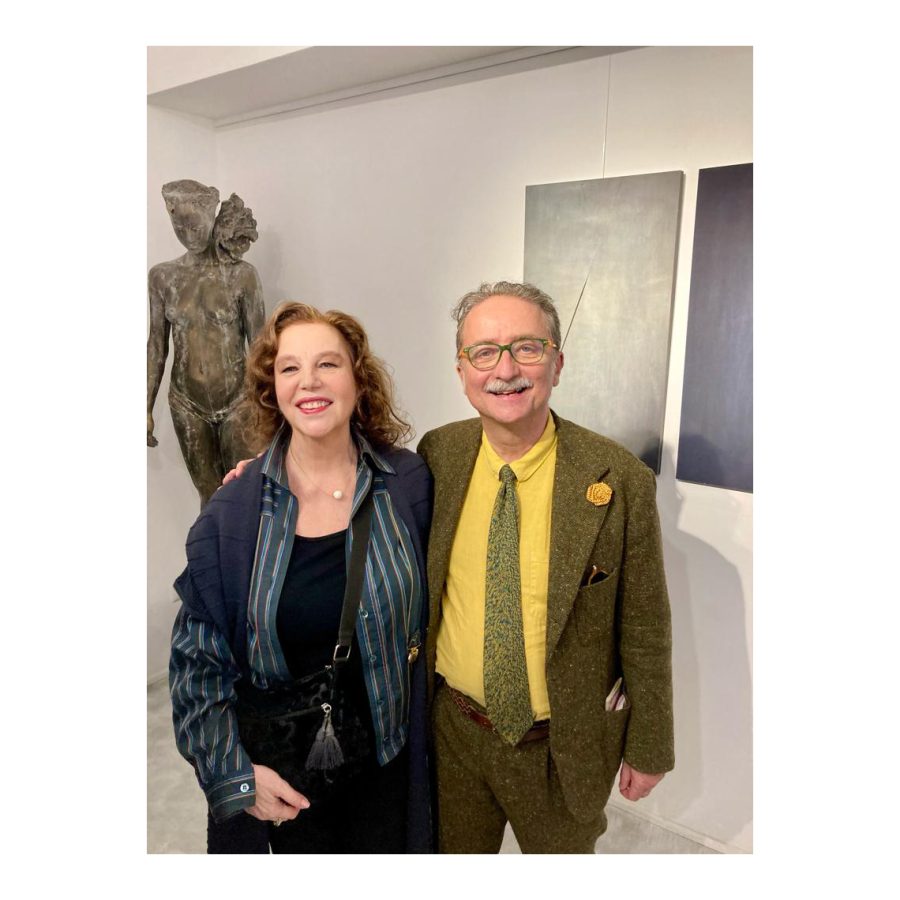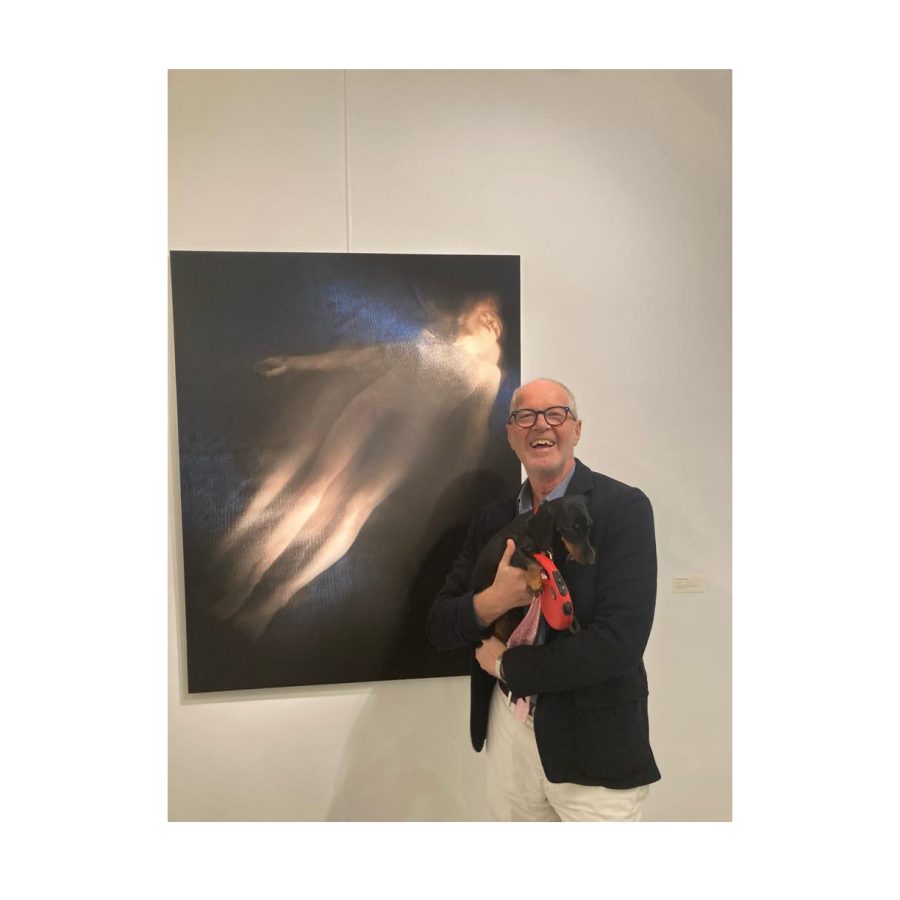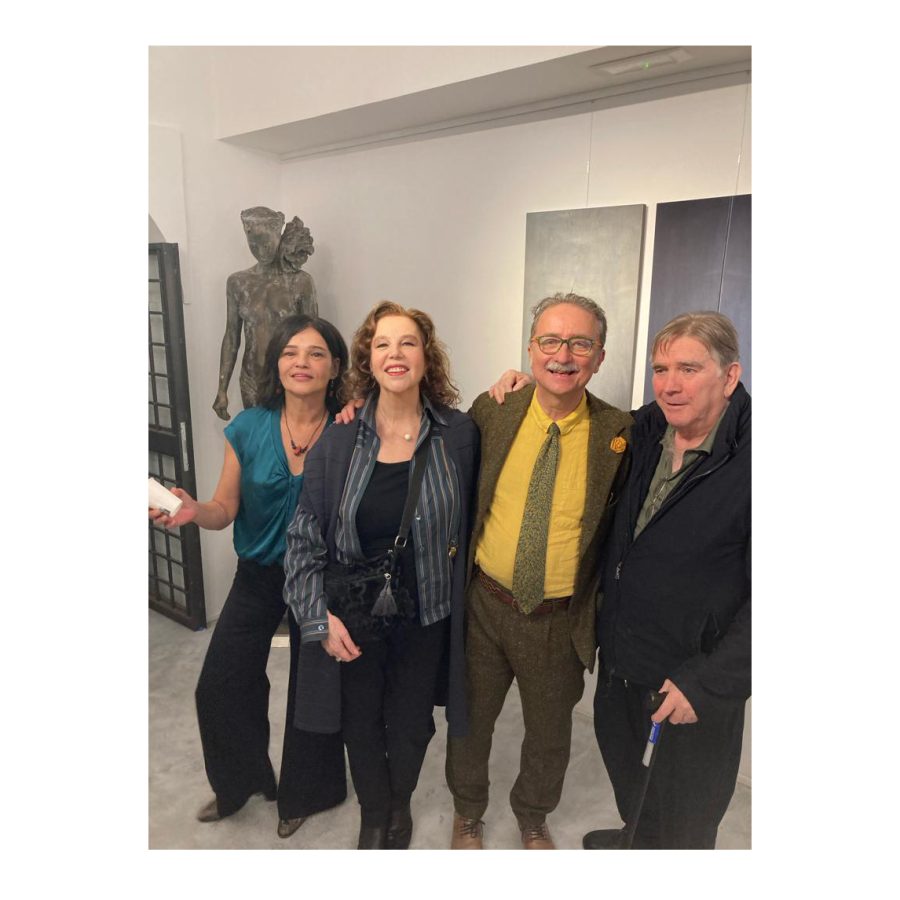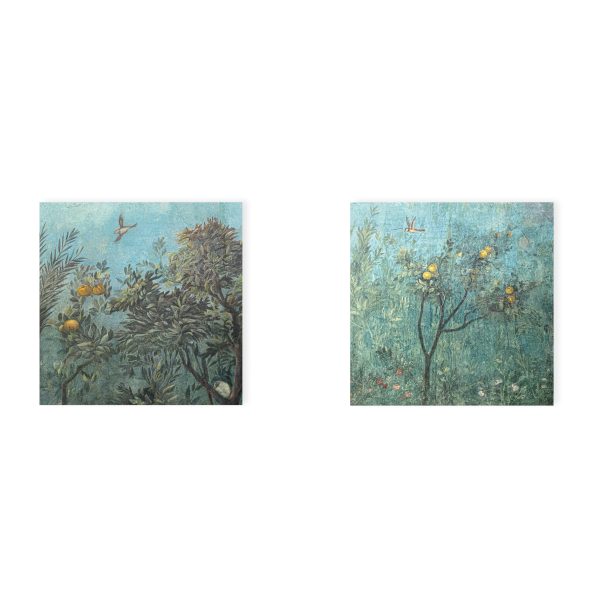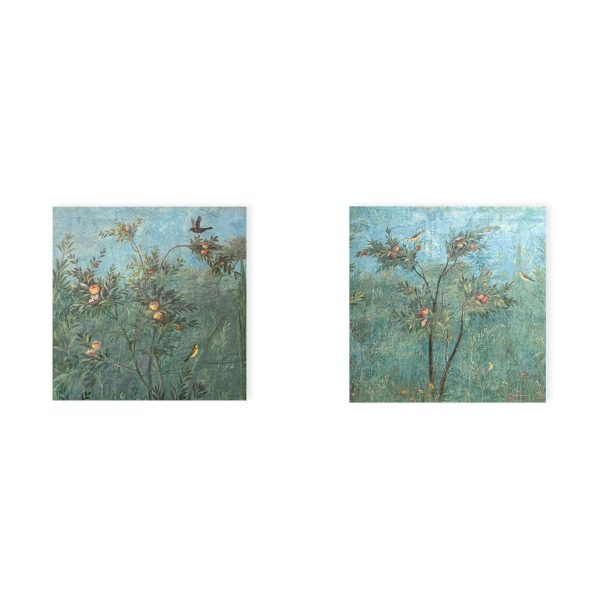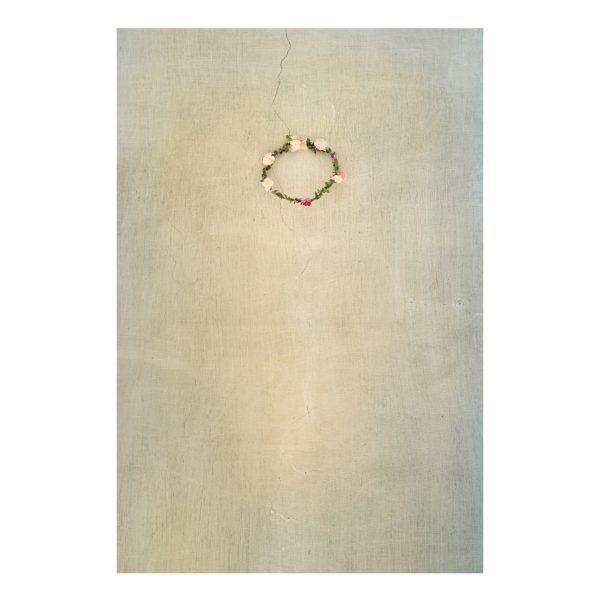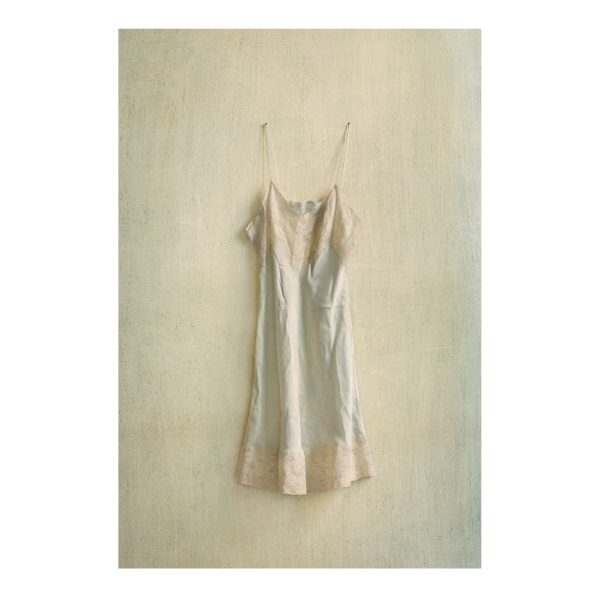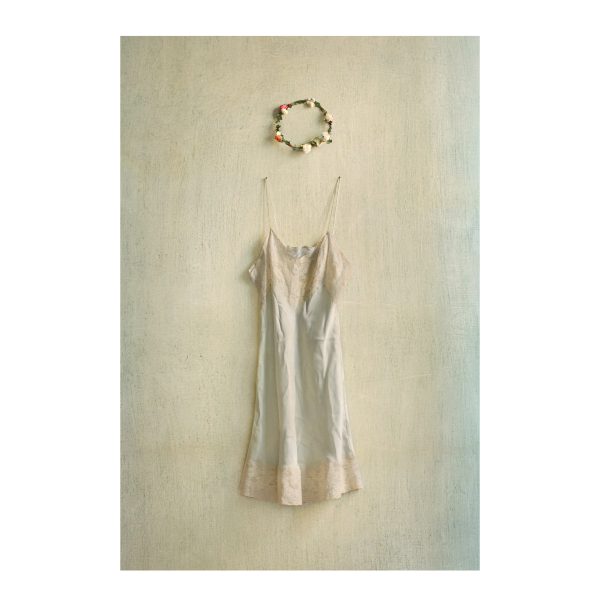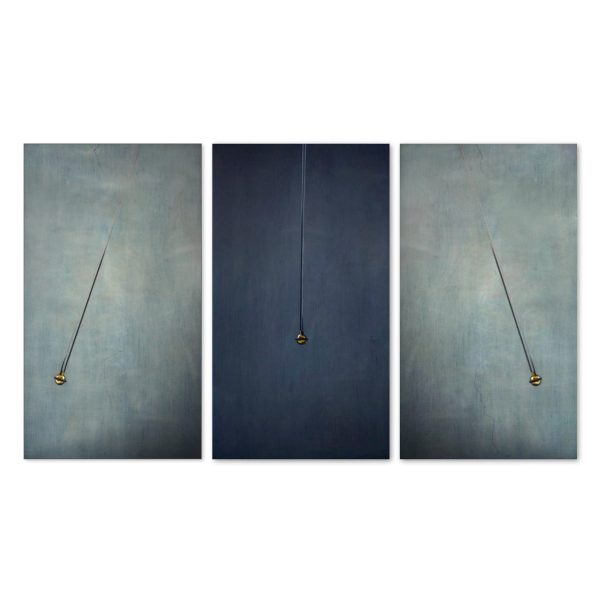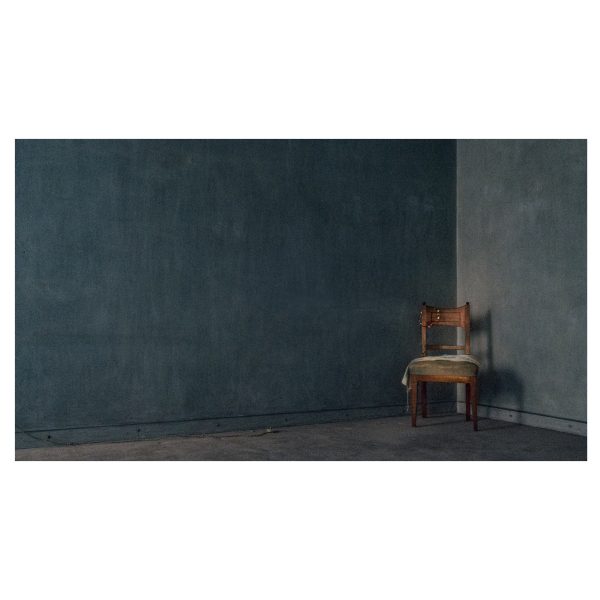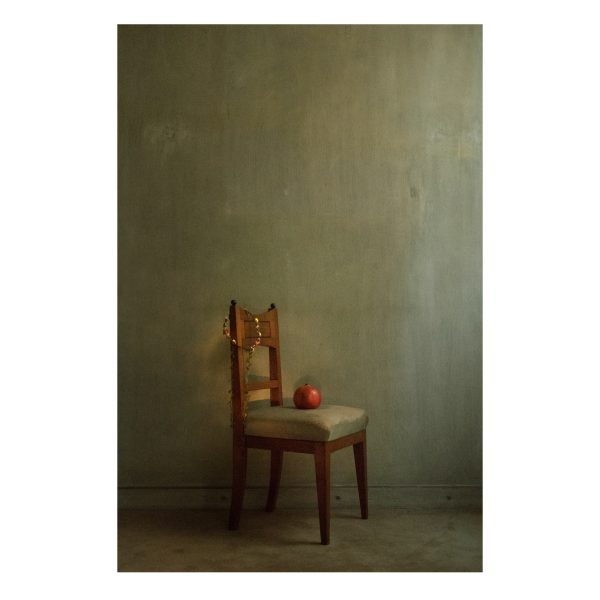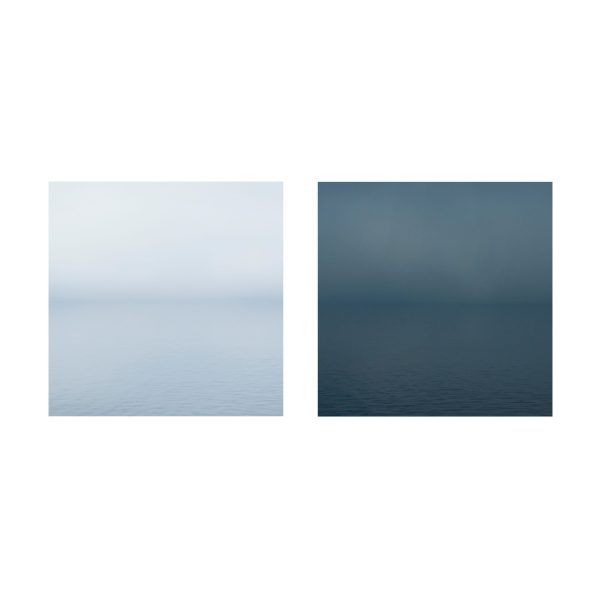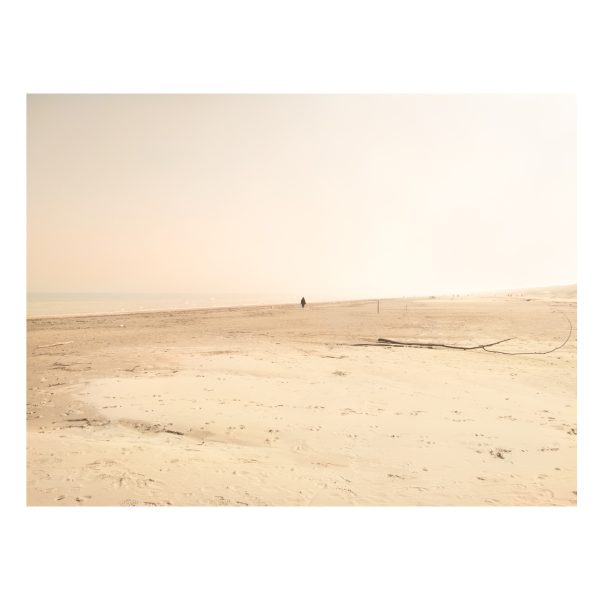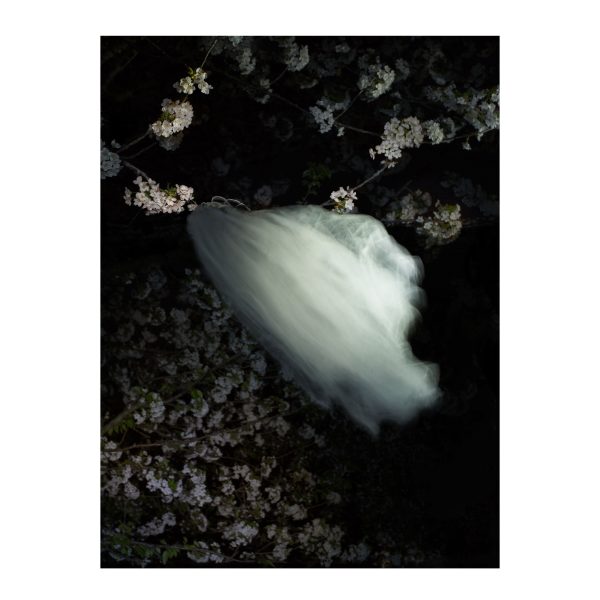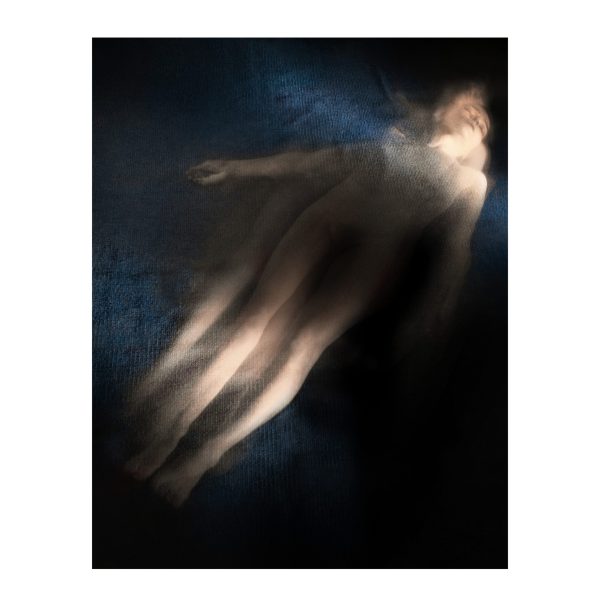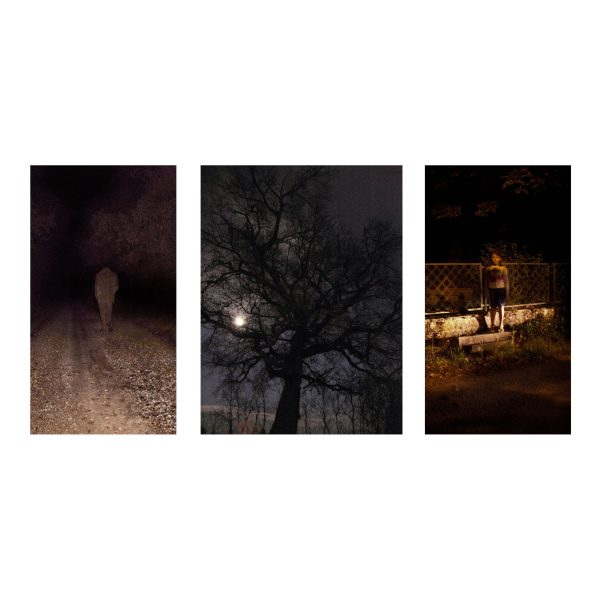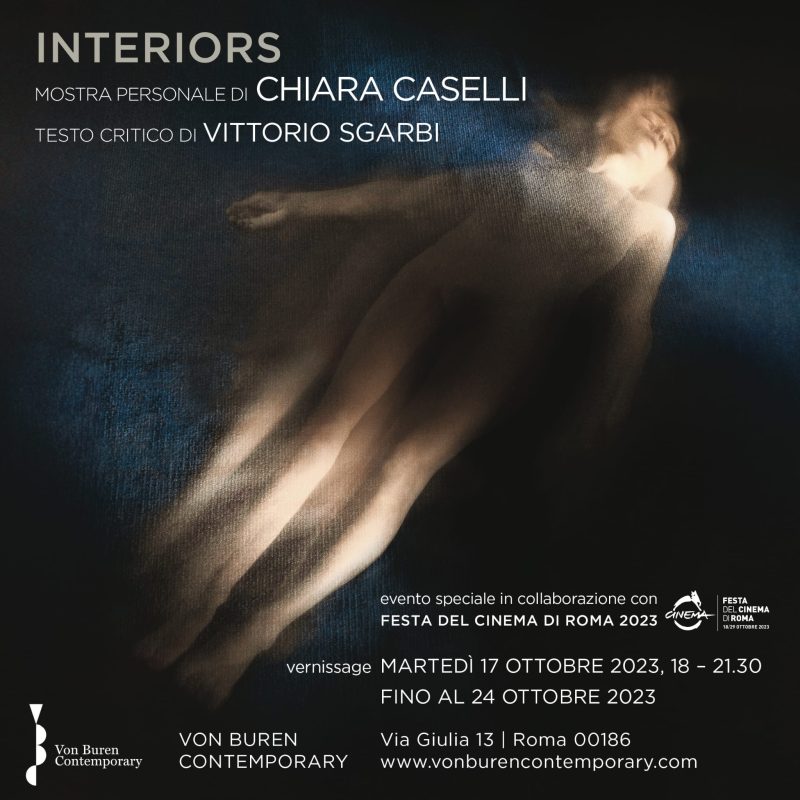
INFO
From October 17 to October 24, 2023
Vernissage: Tuesday October 17, 6 – 9 pm
Von Buren Contemporary
Via Giulia 13
00186 Rome
Interiors
solo exhibition of
CHIARA CASELLI
Special event in collaboration with Festa del Cinema di Roma 2023 (Rome Film Fest 2023)
Presentation text: VITTORIO SGARBI
Exhibition sponsored by La Milanesiana 2023 created and directed by Elisabetta Sgarbi
the exhibition will remain on show until Tuesday, October 24
Von Buren Contemporary
Via Giulia 13, 00186 Rome
In collaboration with Rome Film Fest 2023, Von Buren Contemporary is delighted to host the photographic solo exhibition INTERIORS by Italian artist Chiara Caselli.
… She has photographed the infinite in the sky and the sea, communicating about herself with purity, and obstinacy. She returns now with sophisticated and fascinating images in a story woven from absences.
… when an artist interprets every person’s thoughts, it means that he or she is an artist. When you read Leopardi, what you read is about him, but it is also about you. His infinity is our infinity too. Now, in these rooms created by Chiara, you will see yourselves, you will find a part of your soul…
Vittorio Sgarbi
INTERIORS
She (Chiara Caselli) has photographed the infinity of the sea and sky, speaking of herself with purity and obstinance. She returns now with sophisticated images of a tale woven from absences.
A seat in an empty room against a grey wall. If her seas and skies remind us of the paintings by Guccione, this desolate interior, with its grey walls, brings to mind the stark poetry of the rooms of Livornese artist Gianfranco Ferroni. The chair speaks to us, it has witnessed life, gestures, and indicates the absence of a person. Chiara, in her long afternoon of meditation. The chair, the tunic, the crown of flowers are all that remain. The photograph speaks to us. Something has happened. Something will happen. The story of small interior and exterior movements culminates with the white tunic hung on the wall with the crown above it. Chiara is elsewhere. In the room her ghost stirs.
Chiara’s gaze moves. It enters a forest, into nature, with the most tenuous, pastel colours. We can feel the wind in the leaves, in a fusion of green and blue. But there is something more than the green. There is the space of memory, time that has stopped. Chiara’s eye roves in Livia’s house as if it were in Pompeii, in the House of Lovers, in the House of the Orchard, in the House of Venus. In her villa along the Via Flaminia, Livia, wife of Emperor Caesar Augustus, had an eternal garden painted, characterised by the evergreen luxuriance of the plants, the perennial blossoming of the flowers, the twittering of birds among the fronds. Along the walls we can see trees heavy with fruit, flowering bushes, birds flying between the branches moved by the wind while others sing as they rest on the fronds: doves, goldfinches, sparrows, blackbirds, swallows, nightingales, partridges. At the bottom, a field has been painted – punctuated by shrubs (acanthus, heather, ferns), flowers (roses, poppies, chrysanthemums, irises), resting birds, a small cage.
Chiara enters this garden where winter never falls, here she moves and sees, and feels, she enters with her body, being inside it, and she understands it as if it were real, because Art is also real, the garden is real but the painted garden is real as well. The painted garden becomes an interior space and Chiara turns it into her garden. We are in a space of desire, in a place that belongs to Chiara, her hortus conclusus, to which we are admitted in order to learn something of her soul, of her delicacy, of her desire to escape. An escape that goes beyond time, where it is not possible to reach her, where she can be protected and sheltered. There are no confines to her vision, no margins, that landscape is the landscape of her soul.
In the third phase, after the emptiness of the house, the body appears, the naked body, blurry, out of focus, sensual, like in the paintings of Guido Cagnacci and Artemisia Gentileschi. Chiara’s nude is also incorporeal, it is a psychological nude, one that is fading. The body trembles, it shakes, it shows itself in ecstasy like Caravaggio’s last Magdalene. Then the nude disappears, and all that is left is a nocturne, a white wedding veil suspended in the wind between flowering branches, recalling the celebrated Ophelia of John Everett Millais. It is Chiara’s mother’s wedding veil, a veil from a time when Chiara had yet to exist – the time when the mother was not yet a mother, the time of endless youth, immaterial time, eternal time. It is a testimony of hers alone, of Chiara, but that veil is also our mother’s veil, it concerns our thoughts, our memory, our identification, because Art imposes an identification on us. When an artist interprets every person’s thoughts, it means that he or she is an artist. When you read Leopardi, what you read is about him, but it is also about you. His infinity is our infinity too. Here, now, in these rooms created by Chiara, you will see yourselves, you will find a part of your soul…
Vittorio Sgarbi
